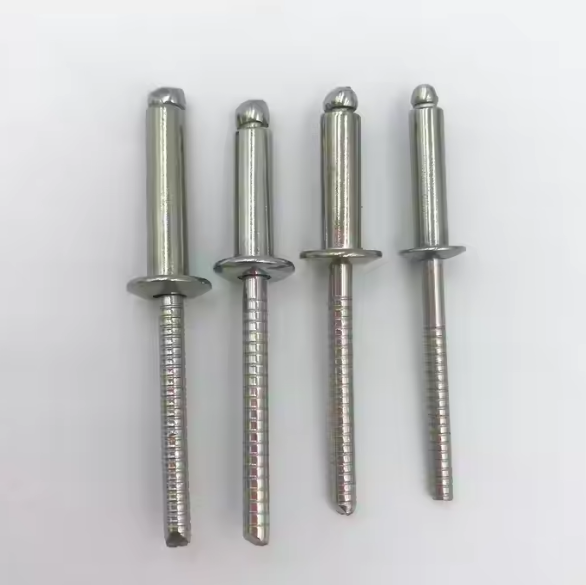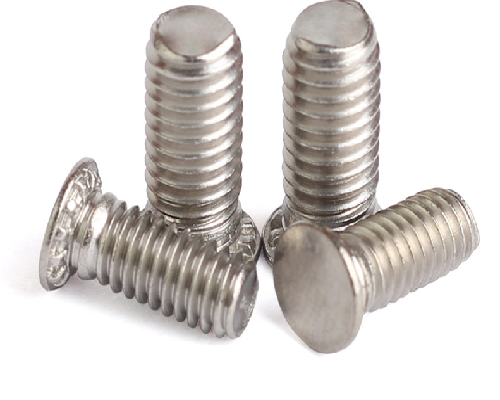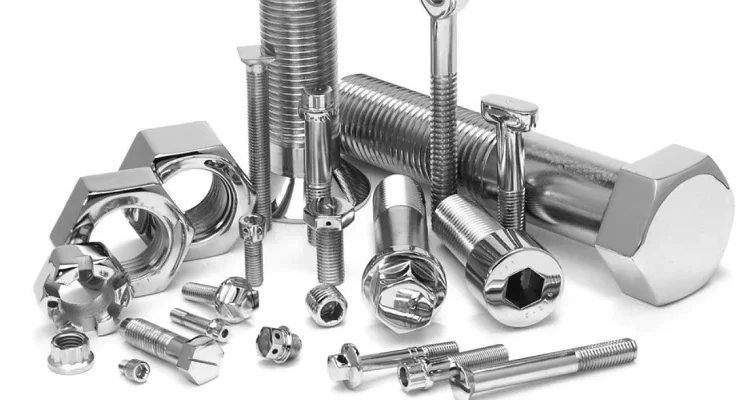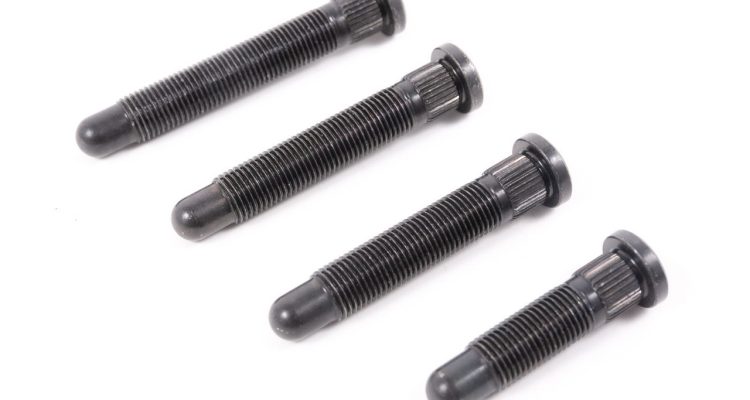
What is the difference between a solid rivet and a blind rivet
Installation process
The installation of solid rivets requires both sides to be able to contact, which means the use of specialized equipment, such as riveting guns and anvils, when repairing or building equipment like aviation, automobiles or heavy machinery. These devices knock or squeeze the rivet tail at high pressure to deform it and firmly connect the two materials together, the power of the device is usually about 5000 Newton to 10,000 Newton, which can effectively ensure the durable performance of the rivet under high strength conditions.
The installation of the rivet requires only one side contact, and the entire process can be completed with a manual or pneumatic rivet gun when installing sheet metal, electronic equipment housing or furniture. Taking a manual riveting gun as an example, the power is about 2000 newtons, the price is between 50 and 200 yuan, and the operation is simpler. This method is ideal for applications where only one side can be reached, such as fixing siding in house decoration, or repairing certain electronic devices where the parts on the back are inaccessible.
When making home repairs, if you need to install a sheet of metal to the wall, you will choose to pull rivets, because it is faster to install and does not require the use of professional tools such as riveting guns. It is more efficient than solid rivets, and a single installation process is usually less than 30 seconds. By selecting different rivet diameters and lengths, it is also possible to ensure that different material thicknesses can be adapted, and the rivet with a diameter of 4.8 mm can effectively hold the material with a thickness of 1.5 mm to 6.4 mm.
The price of each rivet is about 0.2 yuan, while solid rivet may need 0.5 yuan or even higher, depending on the material and specifications.

Intensity
Solid rivets are considered a more robust option, especially for situations where they are resistant to high shear and tensile forces. This is because after the solid rivet is installed, the nail tail is completely deformed by hammering or squeezing, forming a firm connection. Solid rivets range in diameter from 3 mm to 10 mm, and their tensile strength can reach 200 to 300 mpa.
The strength of the rivet is relatively low due to the hollow design and the mechanism that relies on the expansion and fixing of the pulling core rod. Their tensile strength is typically between 120 and 180 mpa, suitable for medium load applications such as furniture manufacturing or lightweight metal construction, where the strength of the rivet is already strong enough to withstand the stresses of everyday use.
Suppose you need to install a wall TV stand. The use of solid rivets ensures that there is no risk of the bracket loosening or falling off when bearing the weight of the TV, especially if the TV weighs 50 kg or more. For lighter equipment, such as electronic equipment weighing only 10 to 15 kg, you can choose to use pull rivets, which are strong enough to cope with the installation needs of this medium load.
Solid rivets are usually made of steel or titanium alloy, which can provide extremely high strength and durability. The shear force of steel is generally more than 250 mpa, and the shear force of titanium alloy can reach 450 mpa. Although the strength of stainless steel rivets is close to that of solid rivets, the shear strength of aluminum alloy rivets is lower, about 150 mpa, so it is more suitable for use in scenarios where the strength is not high.

Apply
Solid rivets are primarily used in heavy duty applications that require high strength and durability. In the aviation industry, solid rivets are used in key parts such as the aircraft fuselage and fins because they can withstand high shear and tensile forces. The fuselage of a Boeing 747 aircraft uses about 6 million solid rivets, which are able to maintain the integrity of the fuselage in the strong air pressure and vibration at high altitude. Because these rivets are usually made of titanium alloy or high-strength steel, they can withstand tensile strengths of more than 450 mpa.
In construction fields such as Bridges and skyscrapers, solid rivets maintain structural stability in extreme environments. In some key load-bearing parts, the shear strength of solid rivets is more than 200 mpa. For example, the Golden Gate Bridge in San Francisco, USA, uses millions of solid rivets to secure the steel structure of the bridge, ensuring that it can withstand the impact of heavy vehicles and environmental changes passing through it on a daily basis.
Rivet pulling is more commonly used in light and medium structure applications, in automotive manufacturing, the assembly of doors and interiors often use rivet pulling. Rivets installation process is very fast, a skilled operator can complete the installation of dozens of rivets in one minute, aluminum rivets light weight, low price, suitable for the door lining and other non-load-bearing parts of the connection, its shear strength of about 150 mpa, can effectively withstand the daily vehicle switching vibration.
Rivets can be used to install metal guardrails, electronic equipment housings, and furniture components. Especially when the area to be installed does not have direct access to the back, pulling rivets is ideal. When assembling the metal storage shelf, the metal plate can be easily fixed using pull rivets, providing 120 mpa tensile strength, enough to handle the load demands of everyday household use.
Cost and convenience
The cost of solid rivets is higher, mainly because its material is usually high-strength steel or titanium alloy, which is relatively expensive. Common titanium alloy solid rivets have a unit price of about 5 to 10 yuan, especially in large projects such as aviation or Bridges, where the number of rivets used is huge, and the cumulative cost may reach millions or even tens of millions of yuan. The installation process of solid rivets requires specialized tools and equipment, such as rivet guns, anvils, etc., and also requires two operators: one is responsible for striking the rivet head and the other is responsible for fixing the nail tail. This process increases construction time and labor costs, and a project needs to account for an additional 20 to 30 percent of labor costs.
The cost of pulling rivets is low, and cheaper materials such as aluminum alloy or stainless steel are generally used. The unit price of aluminum rivet is usually between 0.2 and 1 yuan, depending on different specifications and sizes. A medium-scale construction project needs to install 10,000 rivets, and the material cost of using pull rivets is about 2,000 to 10,000 yuan, while using solid rivets may double or more. The installation of the rivet only needs to be completed by using one side, and the worker can use a manual or pneumatic rivet gun for quick installation. A skilled worker using a riveting gun can install about 1,000 rivets in an hour.
It is more convenient to use rivets in home DIY projects, because its installation tools (such as manual riveting guns) are usually priced between 50 and 200 yuan, and the operation is simple and easy to learn, suitable for non-professionals. In contrast, solid rivets require specialized equipment and technology, which is costly and difficult for non-professionals to use at home.
Simple wall metal decoration installation projects if the overall installation time of pull rivets is 50% to 70% faster than that of solid rivets, pull rivets have less impact on the environment during installation because it does not require high-power mechanical equipment. The installation of solid rivets can produce noise and vibration, especially when using high-power rivet guns, which typically reach 3,000 to 5,000 watts.



